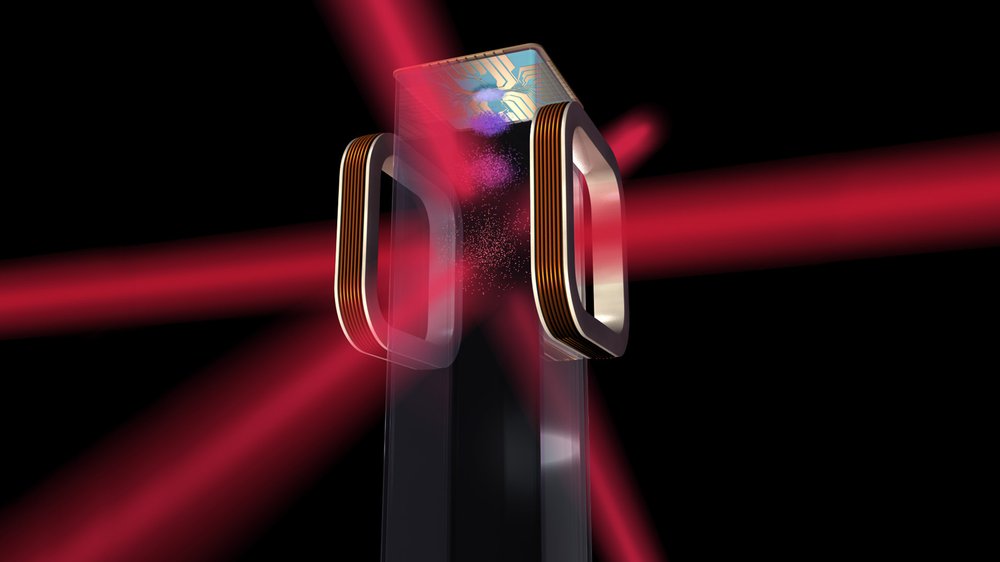News | May 31, 2022, 4:25 p.m.
Cold Atom Laboratory Doing Cool Research

On a sun-drenched hill in Southern California's San Gabriel Mountains, researchers are making progress on an experimental facility that could create the coldest known place in the universe.
The Cold Atom Laboratory, developed at NASA's Jet Propulsion Laboratory, Pasadena, California, will probe the wonders of quantum physics when it launches to the International Space Station. The Cold Atom Lab facility recently hit a milestone of making an ultra-cold quantum gas with potassium, a high-tech feat that puts it on track for launch next year. The planned flight to space is in August 2017.
"Studying gases that have been cooled down to extreme temperatures is key to understanding how complexity arises in the universe, and allows us to test the fundamental laws of physics in a whole new way," said Robert Thompson, project scientist for the Cold Atom Laboratory at JPL.
Researchers with the Cold Atom Lab are interested in a state of matter called a Bose-Einstein condensate, which happens when all the atoms in a very cold gas have the same energy levels. Like dancers in a chorus line, the atoms become synchronized and behave like one continuous wave instead of discrete particles.
On Earth, gravity limits how long scientists can study Bose-Einstein condensates because this form of matter falls to the bottom of any apparatus used to study it. In microgravity, such condensates can be observed for longer periods of time. This would allow scientists to better understand the properties of particles in this state and their uses for tests of fundamental physics. Ultra-cold atoms in microgravity may also be key to a wide variety of advanced quantum sensors, and exquisitely sensitive measurements of quantities such as gravity, rotations and magnetic fields.
Using lasers, magnetic traps and an electromagnetic "knife" to remove warm particles, the Cold Atom Lab will take atoms down to the coldest temperatures ever achieved.
In February, the team created their first ultra-cold quantum gas made from two elemental species: rubidium and potassium. Previously, in 2014, Cold Atom Lab researchers made Bose-Einstein condensates using rubidium, and were able to reliably create them in a matter of seconds. This time, the cooled rubidium was used to bring potassium-39 down to ultra-cold temperatures.
"This marks an important step for the project, as we needed to verify that the instrument could create this two-species ultra-cold gas on Earth before doing so in space," said Anita Sengupta, the project manager for CAL, based at JPL.
"We were able to cool the gases down to about a millionth of a degree Kelvin above absolute zero, the point at which atoms would be close to motionless," said JPL's David Aveline, the Cold Atom Lab testbed lead.
That sounds inconceivably cold to mere mortals, but such temperatures are like tropical beach afternoons compared to the ultimate goal of the Cold Atom Lab. Researchers hope to cool atoms down to a billionth of a degree above absolute zero when the experimental facility gets to space.
One area of science to which the Cold Atom Lab will contribute is called Efimov physics, which makes fascinating predictions about the ways that a small number of particles interact. Isaac Newton had fundamental insights into how two bodies interact -- for example, Earth and the moon -- but the rules that govern them are more complicated when a third body, such as the sun, is introduced. The interactions become even more complex in a system of three atoms, which behave according to the odd laws of quantum mechanics.
Under the right conditions, ultra-cold gases that the Cold Atom Lab produces contain molecules with three atoms each, but are a thousand times bigger than a typical molecule. This results in a low-density, "fluffy" molecule that quickly falls apart unless it is kept extremely cold.
"The way atoms behave in this state gets very complex, surprising and counterintuitive, and that's why we're doing this," said Eric Cornell, a physicist at the University of Colorado and the National Institute of Standards and Technology, both in Boulder, and member of the Cold Atom Lab science team. Cornell shared the 2001 Nobel Prize in physics for creating Bose-Einstein condensates.
At a recent meeting at JPL, researchers associated with the mission gathered to discuss ongoing developments and their scientific goals, which range from dark matter detection to atom lasers. They included Cornell, who, along with co-investigator Peter Engels of Washington State University, is leading one of the Cold Atom Lab experiments. "Cold Atom Lab science investigators could open new doors into the quantum world and will demonstrate new technologies for future NASA missions," said Cold Atom Lab Deputy Project Manager Kamal Oudrhiri at JPL.
"The Cold Atom Lab's investigation will generate scientific data that could rewrite textbooks for generations," said Mark Lee, senior program scientist for fundamental physics at NASA Headquarters.
News Media Contact
Elizabeth Landau
NASA's Jet Propulsion Laboratory, Pasadena, Calif.
818-354-6425
Elizabeth.Landau@jpl.nasa.gov
2016-077
